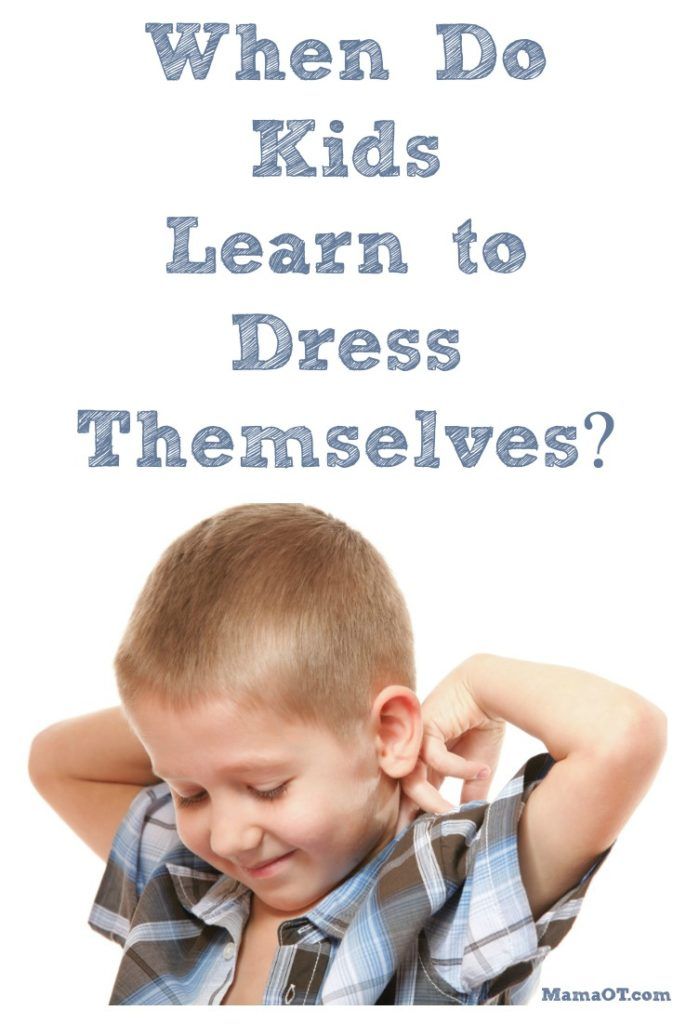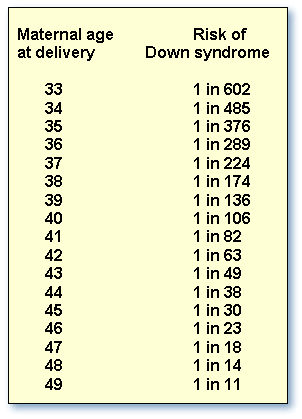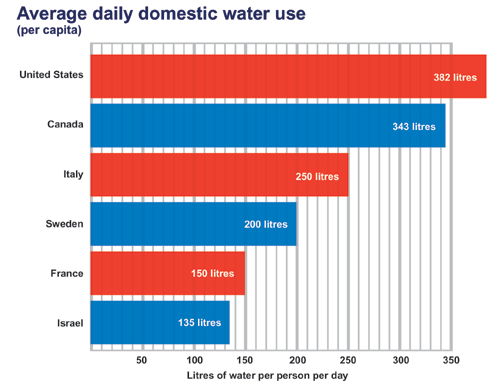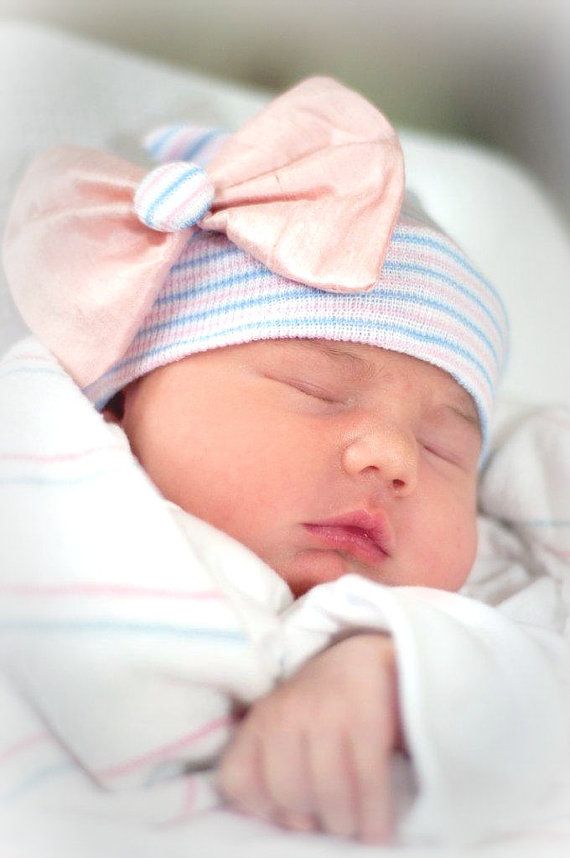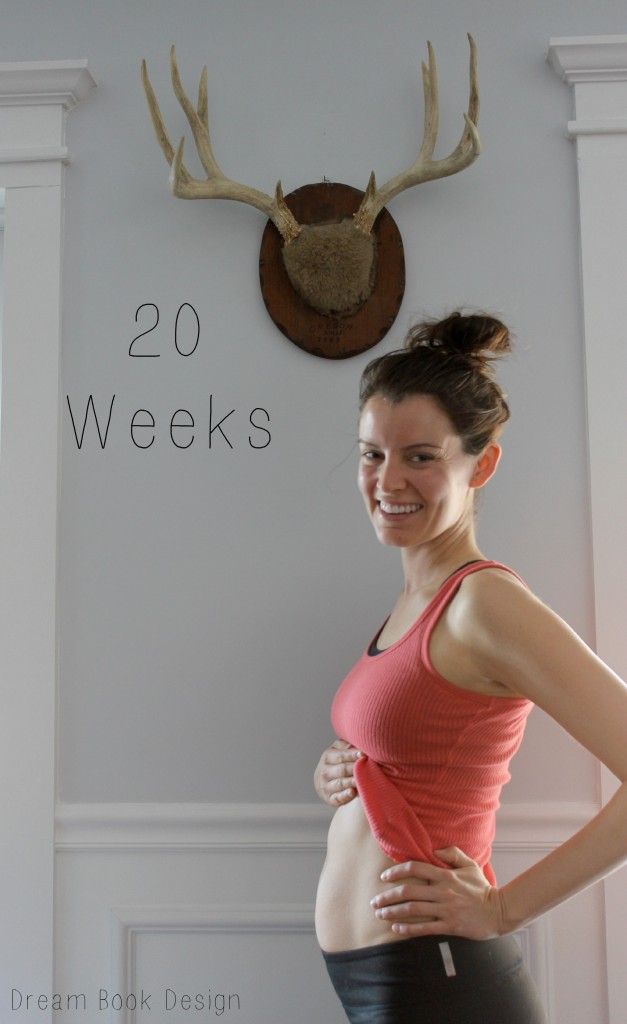Child dressing themselves
How to get dressed: teaching your child
Why your child needs to learn how to get dressed
Learning to get dressed builds your child’s confidence and independence and gives them a sense of achievement. And once your child can dress themselves, helping them get dressed is one less thing for you to do.
Also, getting dressed helps your child develop many other skills. These include:
- fine motor skills – for example, by fastening buttons and zips
- gross motor skills – for example, by standing on one leg to pull on a pair of pants
- cognitive skills – for example, by remembering which clothes go on first and concentrating on getting the task done
- language skills – for example, by naming types of clothes, colours and sizes
- awareness of time and space – for example, by dressing for certain occasions and weather conditions.
Getting started with getting dressed
Often very young children start to be aware of clothing by pulling off easy-to-remove things like socks, shoes or hats. Sometimes they try to put them on again. You can build on this early awareness by naming the clothes your child has taken off and the body parts they go on.
You can start to include your older baby or toddler in getting dressed by letting your child choose clothes and naming them as you put them on your child.
And when you decide it’s time to work on this skill with your child, it can help to have some easy clothes on hand. These might include:
- loose, elastic-waisted pants
- clothes with velcro or large buttons and button holes
- jumpers, t-shirts and underwear with pictures on the front to help your child work out front from back
- clothes that are easy and comfortable for your child to move in.
Getting dressed: breaking down the steps
Getting dressed can have a lot of steps. It helps to break it down into smaller steps – for example, putting on underwear, then t-shirt, shorts, socks and shoes.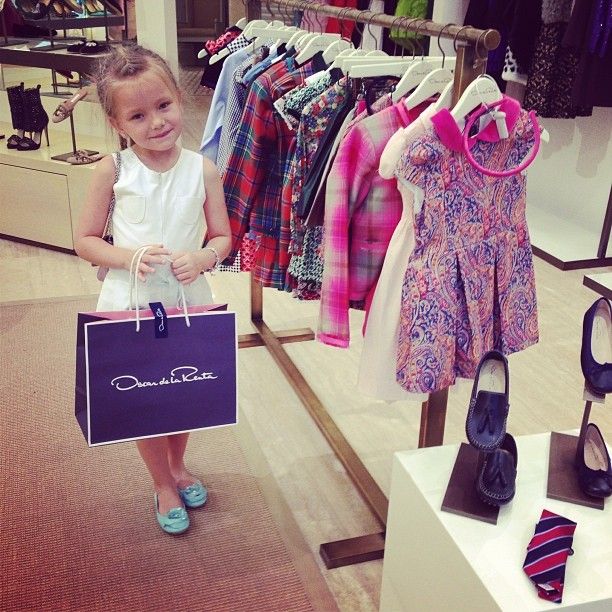
You can also break down each of the steps in getting dressed, depending on your child’s skill and age. For example, you could break down the steps for putting on shorts like this:
- Face shorts the right way.
- Hold on to the front of the waistband.
- Push one leg at a time through the leg holes while also holding the shorts.
- Pull the shorts up.
Talking your child through each step helps them know what to do. In the early stages, simple words or phrases are OK – for example, ‘Shirt on’. You can say more as your child’s language develops – for example, ‘Push your arm through the sleeve’.
When your child can almost dress themselves (usually from 3 years and up), you can check whether they understand the steps. Ask, ‘What’s the first thing you need to put on?’ If your child can’t remember, you can help them get started by reminding them.
Getting dressed: teaching the steps backwards
A good way to teach your child how to get dressed is to break down each task into small steps and teach them the last step first.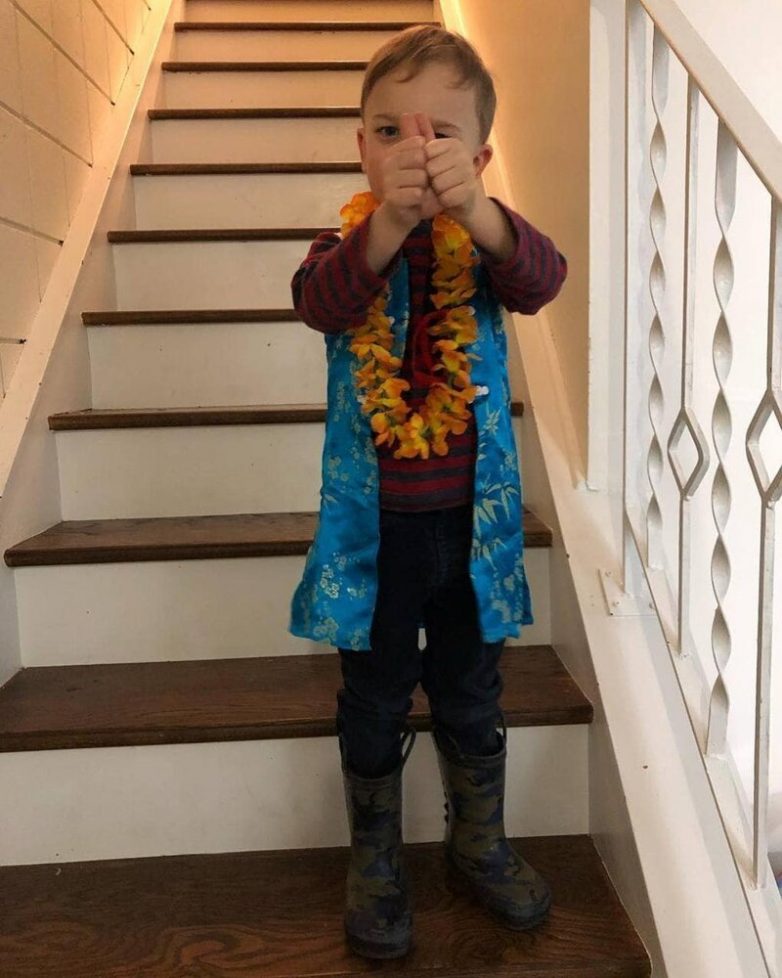 Once your child can do the last step of the task, teach them the second-last step, then the third-last step and so on.
Once your child can do the last step of the task, teach them the second-last step, then the third-last step and so on.
For example, when putting on shorts, you might help your child face the shorts the right way, hold the waistband and put their legs through the leg holes. Then teach your child the last step – pulling up the shorts to their waist by themselves.
Once your child can do this, teach them to put their legs through the leg holes and pull their shorts up. You can keep working your way backwards through the steps until your child has mastered them all and can put their shorts on by themselves.
A big advantage of this approach is that often the most rewarding thing about a task is getting it finished – and your child gets to this reward sooner when they can do the last step first.
If your child is having trouble, it can be tempting to jump in to help. But give your child a chance to work it out for themselves, and cheer your child on as they try.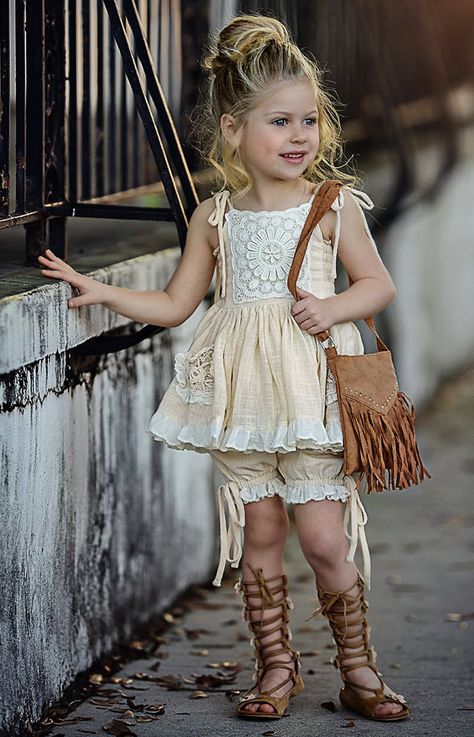 Doing it on their own is great for your child’s confidence. Step in only when your child really needs your help.
Doing it on their own is great for your child’s confidence. Step in only when your child really needs your help.
Tips for helping your child learn to get dressed
If you can be positive and supportive, your child is more likely to cooperate. So a lot of praise will go a long way, even if your child has put their pants on backwards! Here are some practical tips to help.
Making time
- Allow a realistic amount of time for getting dressed.
- If you’re often rushed in the morning, try choosing clothes with your child the night before.
- When you’re in a hurry, let your child do the easy tasks and help them with the difficult tasks.
- Practise getting dressed when you and your child aren’t in a hurry or tired.
Choosing appropriate clothes
- Let your younger child choose from a couple of options, like 2 t-shirts. Older or more mature children might be able to choose their own clothing.
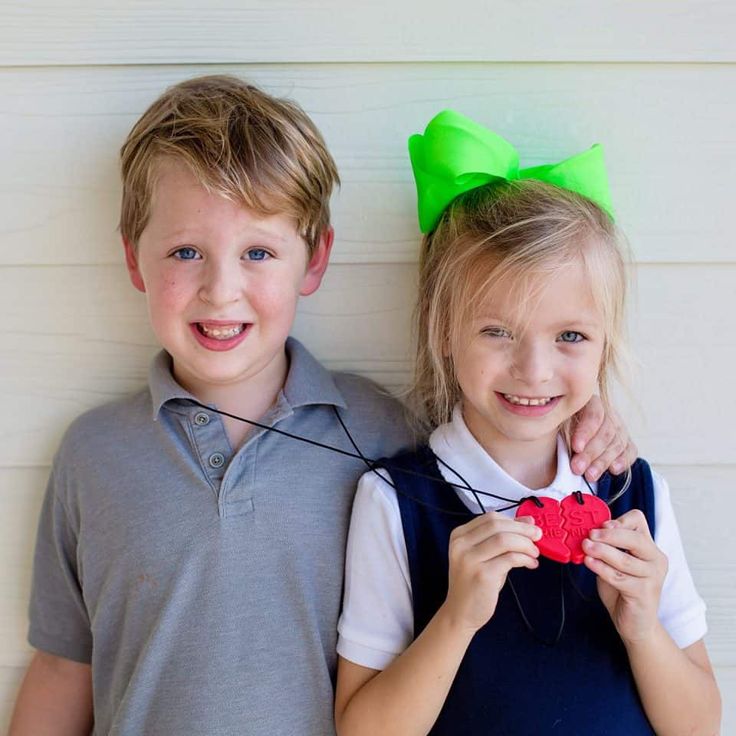
- Talk about the weather when you and your child are choosing clothes. Ask your child whether it’s hot or cold, raining or sunny.
- Teach your child the difference between dirty and clean clothes – for example, ‘Dirty clothes go in the laundry basket. You can wear them again when they’re back in the drawer’. You can use some simple guidelines like wearing clean underwear and socks each day.
Making it easier
- Have your child sit down for dressing tasks. Sitting on the floor might be easier than sitting on a chair or bed for some children.
- Store clothing in drawers and cupboards that your child can get to easily. Label clothing drawers with a picture or word to describe the clothing that’s in the drawer.
- Wear clothes that have clear front and back clues – for example, a picture on the front and a tag on the back.
Teach undressing first – it’s easier than dressing. Being able to undress by themselves can boost your child’s confidence.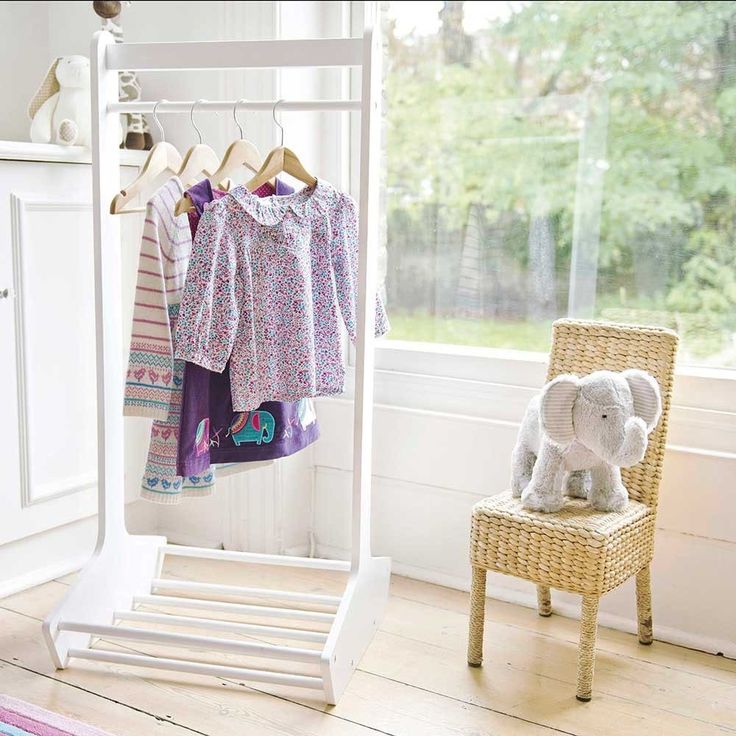
Some children know how to get dressed but need some help with learning to cooperate. If you explain to your child why they need to get dressed or undressed, it might motivate them to cooperate. For example, you could say, ‘You need to get dressed so that you can play in the sandpit with your friends at kindergarten’.
Teaching children with disability, autism or other additional needs to get dressed
Some children with disability, autism or other additional needs can have trouble getting dressed. Some autistic children have sensory sensitivities that make it hard for them to cope with the texture of different materials on their skin.
If you’re having trouble teaching your child with disability, autism or other additional needs to get dressed, an occupational therapist (OT) who works specifically with children might be able to help. OTs can give you strategies to teach your child to dress or suggest equipment that can make the process easier.
Development of skills for getting dressed
Here’s a rough guide to dressing skills at different ages. Keep in mind that children develop skills at different rates.
Keep in mind that children develop skills at different rates.
At one year children can usually:
- hold their arms out for sleeves and put their feet up for shoes
- push their arms through sleeves and legs through pants
- pull socks and shoes off.
At 2 years children can usually:
- take off unfastened coats
- take off shoes when the laces are untied
- help push down pants
- find armholes in t-shirts.
At 2½ years children can usually:
- push down pants with elastic waists
- try to put on socks
- put on front-buttoned shirts, without doing up buttons
- unbutton large buttons.
At 3 years children can usually:
- put on t-shirts with little help
- put on shoes without fastening – they might put them on the wrong feet
- put on socks – they might have trouble getting their heels in the right place
- pull up and push down pants by themselves
- zip and unzip without joining or separating zippers
- take off t-shirts without help
- button large front buttons.
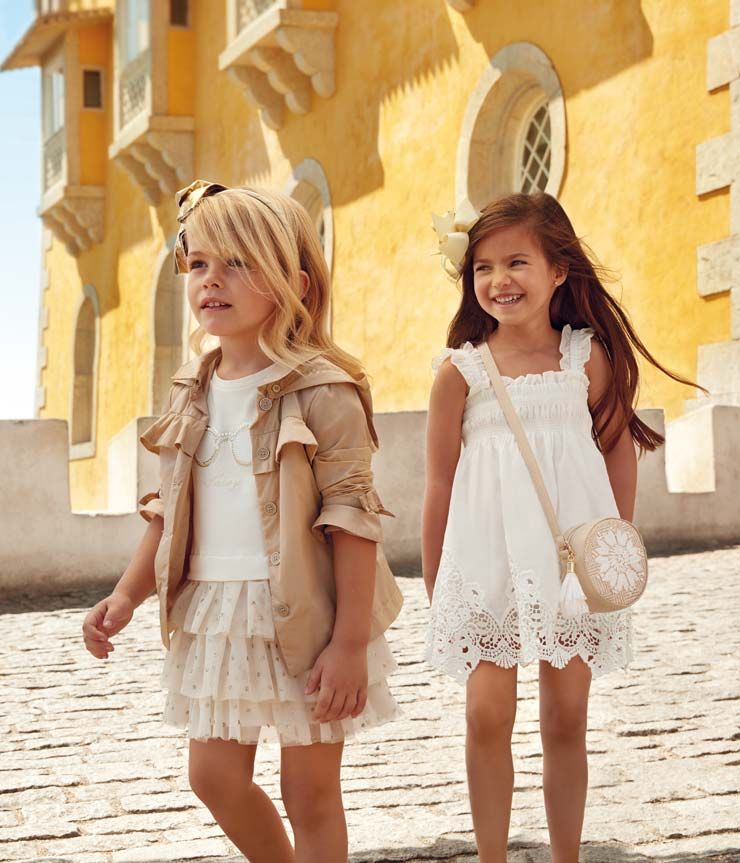
At 4 years children can usually:
- take off t-shirts by themselves
- buckle shoes or belts
- connect jacket zippers and zip them up
- put on socks the right way
- put on shoes with little help
- know the front and back of clothing.
At 4½ years children can usually:
- step into pants and pull them up
- thread belts through buckles.
At 5 years children can usually:
- dress without your help or supervision
- put on t-shirts or jumpers the right way each time.
Tying up shoelaces is a skill that most 5-year-olds are still learning. Our handy illustrated guide to tying shoelaces outlines some easy steps for teaching your child this skill.
When Can Kids Dress Themselves?
The main takeaways for this guide take less than 1 minute to read. It contains information from seven sources, including the American Academy of Pediatrics and the CDC. See the full list below.
See the full list below.
This guide will be updated again in September 2021. Know something we should add? Email us.
Dressing your children is one of those basic things you do for them, day in and day out, until one day it dawns on you that they might be able to do this themselves. (Or…they force they issue.)
At what age can kids dress themselves? We went through a few different sources to get the low down on when your kids can dress themselves and how to help them.
The main takeaways:
- It’s a range (as always), but most sources concluded that kids should be able to dress themselves around Kindergarten age, i.e. 5-6 years old.
- It’s something we do every day so it’s easy to take it for granted, but getting dressed actually involves a lot of cognitive and motor skills. And that can explain why kids learning to dress themselves often happens bit-by-bit over a longer period of time.
General Agreement Around Kindergarten
The sources we reviewed varied on when kids should be able to dress themselves, but most were in the general vicinity of 5 years old.
The American Academy of Pediatrics recommends parents encourage independence in getting dressed for kids ages 4-6. They suggest laying out an outfit the night before so your child can get dressed without having to focus on anything else.
The CDC says children should be able to dress themselves and tie their shoes by “middle childhood,” which they define as 6 to 8 years of age.
Rebecca Jackson, a neuropsychological educator and co-author of The Learning Habit, a book on helping kids learn good habits and chores, broke down getting dressed in the following categories:
- Preschoolers: You can expect them to help pick out their clothes (she suggests giving limited options), but not to fully dress themselves yet.
- Kindergarten: Kids this age can lay out their clothes the night before and mostly dress themselves, but they will need help with buttons and tying.
- First grade: Set out clothes themselves and get dressed. Also able to put clothes away into drawers.
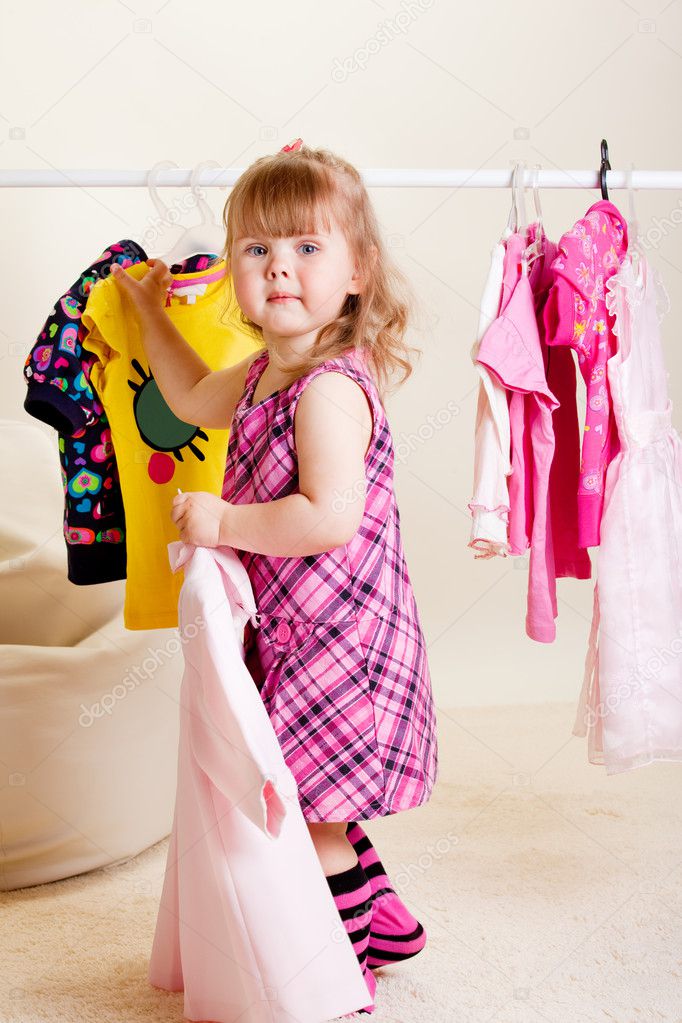
There are a few sources that say younger children should be able to dress themselves, some as early as three years old. Dr. Kyle Pruett, a child psychiatry professor at Yale, wrote an article encouraging parents to give their kids autonomy and letting them “figure out how to do things themselves, messy as it may be at the start.”
He recommends letting three-year-olds dress themselves (with supervision) and says by five children should be able to pick out their own clothes, too.
And occupational therapist Christie, the author of the MamaOT blog, has a great list breaking down about when kids will typically be able to do very specific elements of getting dressed (i.e. taking off a hat versus taking off a pullover shirt).
Below is a short summary of her milestones, but the whole thing is a good encapsulation of how many different elements there are to getting dressed, which is why there isn’t a hard and fast age:
- By 3: Take off front opening clothes, put on coat, put on pullover shirts with supervision, still needs help with right foot
- By 4: Puts on sock all the way, can take off most pull over clothing, puts shirt on in the right direction
- By 5: Gets fully undressed on their own without reminders, can dress independently when asked
Ultimately though, she concludes that “given appropriate opportunities, instructions, and expectations, kids should be able to independently dress themselves around Kindergarten age.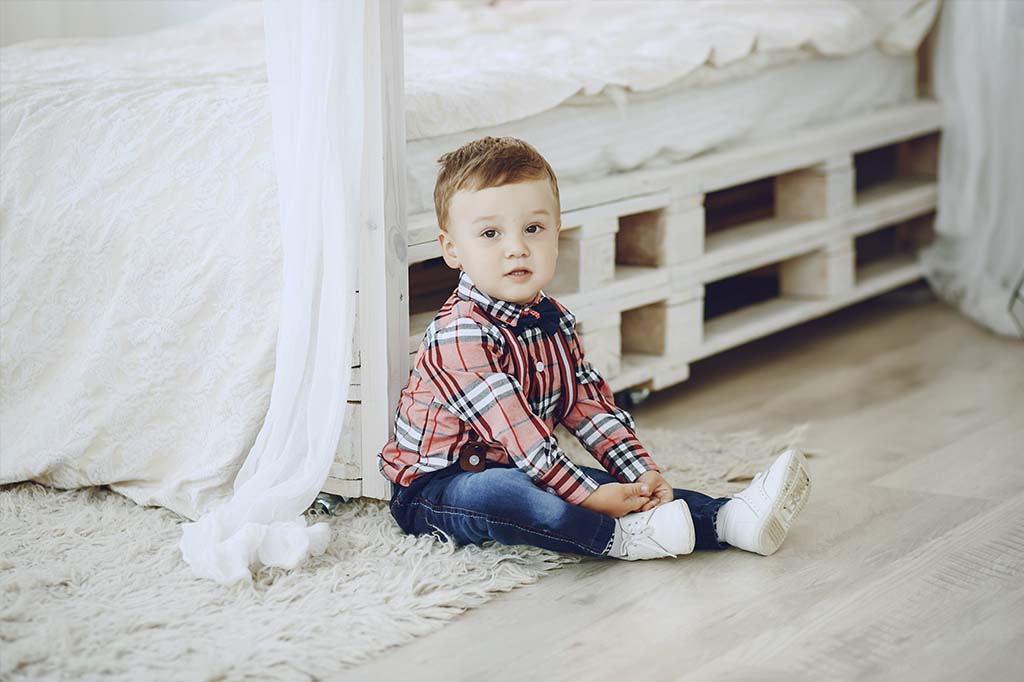 While that doesn’t mean they won’t need help here and there for tricky shoes or stubborn zippers, they should be able to meet most of their basic self-dressing needs by this age.”
While that doesn’t mean they won’t need help here and there for tricky shoes or stubborn zippers, they should be able to meet most of their basic self-dressing needs by this age.”
Learning to Get Dressed Actually Involves Lots of Steps
The MamaOT article also explains why getting dressed is a big deal. She writes that occupational therapists “know from experience that kids’ ability to dress themselves plays a big part in relieving family stress and improving family routines. This is true whether a child has a disability or not.”
In addition to relieving family stress, getting dressed covers lots of skills, including “building up strength, range of motion, coordination, memory, sequencing, spatial awareness, and body awareness.”
There are three different skill sets your child has to master in order to dress themselves, according to Emily Austin, an occupational therapist interviewed by Parents.com:
- Gross motor: Movements like lifting arms and legs to put on clothes or take them off
- Fine motor: Using fingers to make things like buttons or zippers work
- Cognitive: Understanding what order clothes should be put on and what is appropriate for the weather
What To Do If Your Child Is Struggling
If your child is having a hard time getting dressed on their own, the first question to figure out is whether it is a motor skills issue or a cognitive one (or both.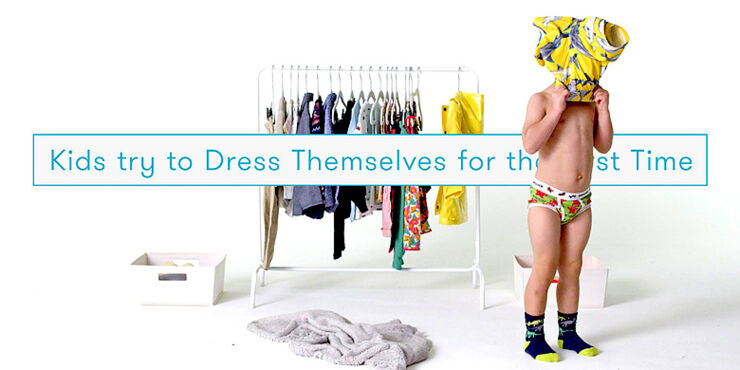 ) A pediatrician and/or occupational therapist can help you figure that out first.
) A pediatrician and/or occupational therapist can help you figure that out first.
If motor skills are the challenge, it might be that your child is struggling to take off their socks and shoes because they don’t have the strength or grip needed to complete that task. If that is the case for your young preschooler, it could be time for a more in-depth evaluation.
If your child is struggling with getting dressed and its clear it isn’t a motor skills issue (i.e. they are able to move and manipulate items to get dressed), it could be that “executive functions” are a challenge for them. The Child Mind Institute has advice on how to help them develop those executive functions, which include the skills we us all day every day to plan, organize, and make decisions on everything from how to brush our teeth to what order to cook dinner.
For something like getting dressed (which they say can take an extraordinarily long time for a child with poor executive functioning), educational therapist Ruth Lee recommended a checklist to eliminate the decision-making process that they end up getting stuck on: “Often these kids will get so wrapped up in the decision-making process that they never even start the task. Or, if they do begin, they’re constantly starting and restarting because they’ve thought of a better way to do it. In the end they’re exhausted when the time comes to actually follow though,” Lee said.
Or, if they do begin, they’re constantly starting and restarting because they’ve thought of a better way to do it. In the end they’re exhausted when the time comes to actually follow though,” Lee said.
Sources
Growing Independence: Tips for Parents of Young Children – HealthyChildren.org
Study Finds Habits in Children Take Root by Age 9 | Psychology Today
Encouraging Independence in Young Children | Psychology Today
When Do Kids Learn to Dress Themselves?: The Developmental Progression of Self-Dressing Skills – Mama OT
When Do Toddlers Start Self-Dressing? | Parents
Help for Executive Functions | Child Mind Institute
Middle Childhood (6-8 years old) | CDC
protest or problem – “Healthy Child Internet Cabinet”
Quite often, parents of young children are faced with such a problem as the unwillingness of the child to dress. Many kids categorically do not want to wear blouses, jackets and hats. Screams, tears, attempts to escape, tantrums - a fairly common picture that occurs in many families at the time of gathering on the street.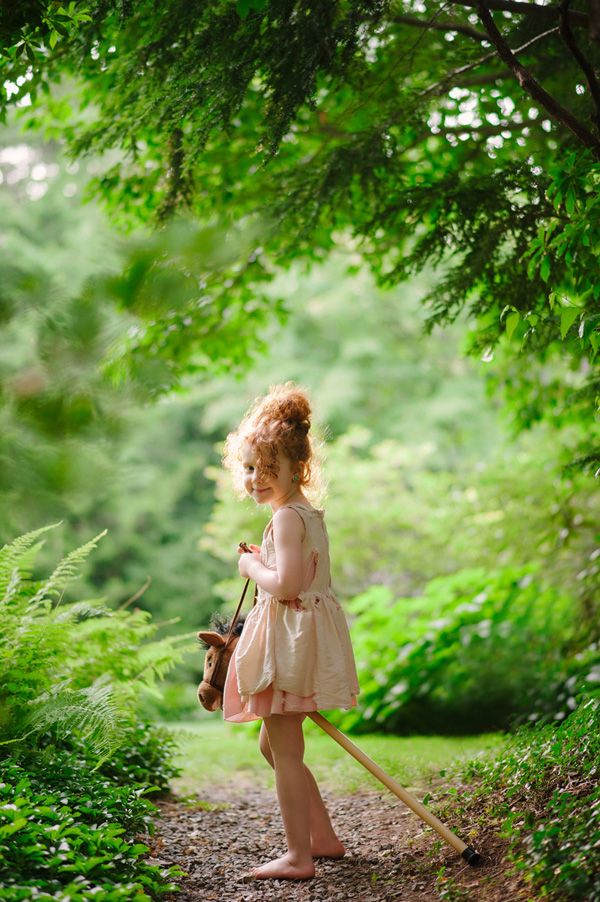 It seems that your child, being quite calm and obedient the rest of the time, at this time turns into some kind of monster who, out of spite and only out of harm, does not want to dress and does everything to make you late for a visit or for work. It seems that he specifically wants to piss you off and ruin your mood.
It seems that your child, being quite calm and obedient the rest of the time, at this time turns into some kind of monster who, out of spite and only out of harm, does not want to dress and does everything to make you late for a visit or for work. It seems that he specifically wants to piss you off and ruin your mood.
But we are adults and we must understand that this is complete nonsense and that there are explanations for everything! So what is really happening? Why do children dislike this process so much? How does one relate to this and what to do if the child does not want to dress?
Possible reasons why a child does not want to dress
Quite understandable explanations for such behavior of very young and not yet independent children at the age of 1-2 years can be the fact that clothes simply interfere with him. He is uncomfortable and uncomfortable. He experiences a feeling of stiffness, closeness and unnaturalness of his own body. In the end, the process of dressing itself is not a pleasant procedure.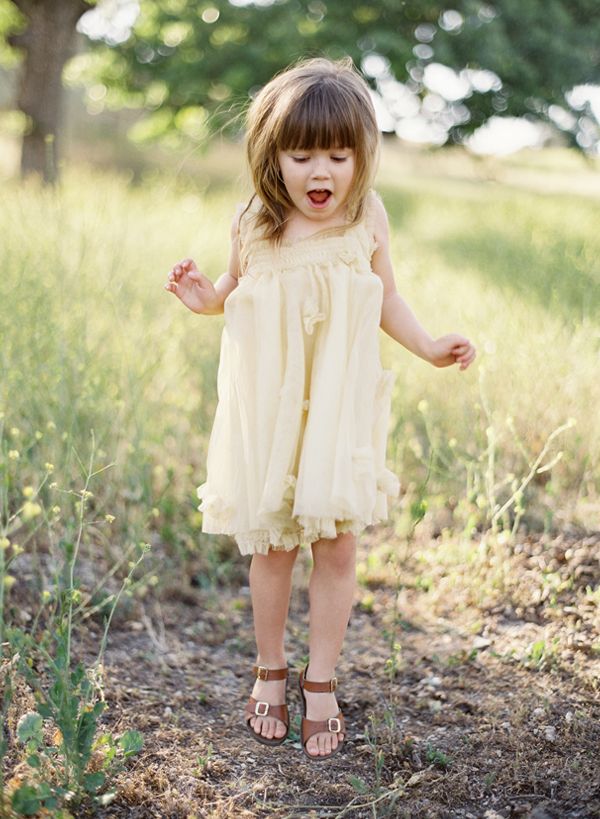 Especially when parents clumsily and often in a hurry try to put their arms and legs into narrow clothes that restrict any movement. In addition, the process of dressing distracts from any interesting activities and implies that you need to stand still for some time without moving, automatically following your mother's commands. And if, in all honesty, we remember how often parents raise their voices at the same time, how they start to get nervous, rush the children, scream and, God forbid, raise their hand against him and use force? Explaining to a 2-year-old child that it is cold outside and he may freeze is not a good prospect. Punishing and threatening, as well as begging and asking, is also not an option.
Especially when parents clumsily and often in a hurry try to put their arms and legs into narrow clothes that restrict any movement. In addition, the process of dressing distracts from any interesting activities and implies that you need to stand still for some time without moving, automatically following your mother's commands. And if, in all honesty, we remember how often parents raise their voices at the same time, how they start to get nervous, rush the children, scream and, God forbid, raise their hand against him and use force? Explaining to a 2-year-old child that it is cold outside and he may freeze is not a good prospect. Punishing and threatening, as well as begging and asking, is also not an option.
What to do?
First of all, you need to remember that under no circumstances should you lose your temper! You should always be calm and balanced. In addition, you must be sure of your actions and that you are right. What will happen if, approaching your son or daughter with clothes, you think that now he will run away, hysteria and cry? Of course it will! You consciously program events in advance. Therefore, in complete calmness and confidence, while the child is doing his own thing: playing or watching a cartoon, collect things for him, dress yourself and only then, slowly, without drawing attention to yourself, start dressing him. If the child is not busy, take it yourself - tell a fairy tale or read a poem. Play games - nursery rhymes, which can be found in large numbers on the Internet, or sing a song. Distract him in any way you want.
Therefore, in complete calmness and confidence, while the child is doing his own thing: playing or watching a cartoon, collect things for him, dress yourself and only then, slowly, without drawing attention to yourself, start dressing him. If the child is not busy, take it yourself - tell a fairy tale or read a poem. Play games - nursery rhymes, which can be found in large numbers on the Internet, or sing a song. Distract him in any way you want.
If your child doesn't want to dress up, avoid blouses with narrow necks and tight sleeves, as well as turtlenecks, if possible. Put on your hat at the very last moment. In general, everything that is connected with the head causes a storm of protests and indignation in young children. At the moment of dressing over your head - play games - hide and seek, such as "Ku-ku". Use your imagination, come up with something interesting, play with your child. Even if not everything works out right away, be patient a little. No matter what, stay calm and kind.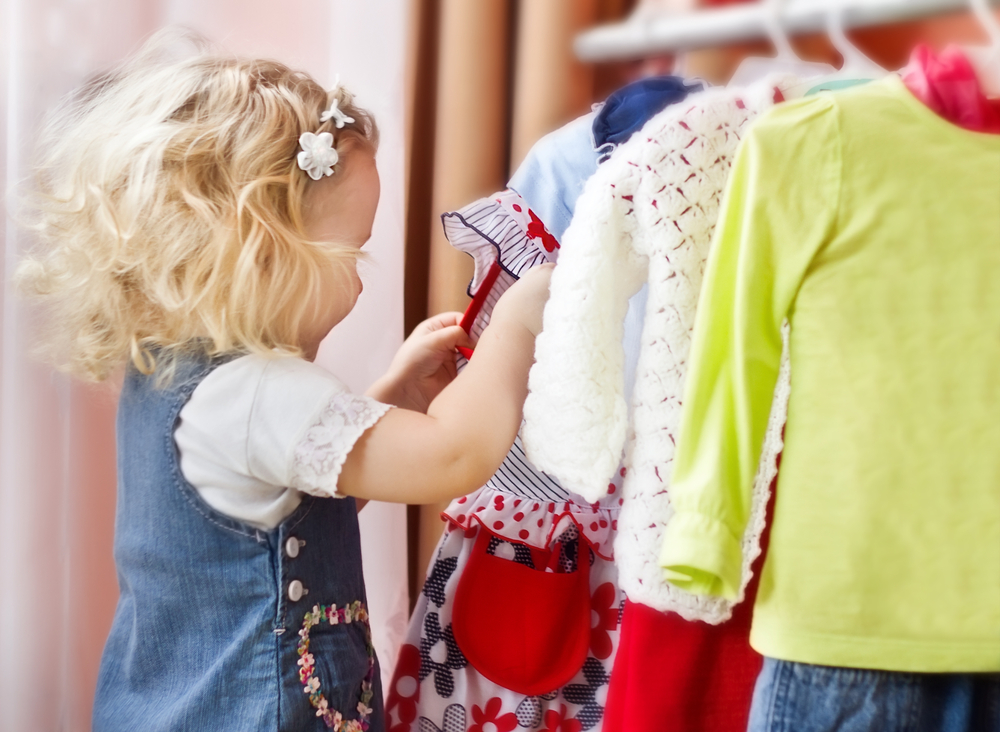 After all, 10 minutes of patience is still better than 2 hours.
After all, 10 minutes of patience is still better than 2 hours.
The simplest explanation for an older child's reluctance to dress may be the fact that he simply does not know how to do it. Sometimes it is easier for parents to dress the child themselves. But then a moment occurs, and often it happens suddenly, when mom or dad starts talking about the development of independence in their child and begins to demand that he quickly dress himself independently. The harsh demands that have fallen on the little man may well provoke feelings of anxiety, insecurity and excitement. In such a situation, the baby completely loses all ability to do anything, he is depressed, scared, confused and does not understand at all how and what to put on.
Quite understandable are such reasons as: unwillingness to go to kindergarten, to a clinic or to visit someone. Or, on the contrary, he wants it too much, and the process of dressing only delays the long-awaited moment.
But what if there are no obvious and understandable reasons, but still, the child does not like to dress up?
It turns out that in most of these cases, the root of the problem of dislike to dress is much deeper than we think.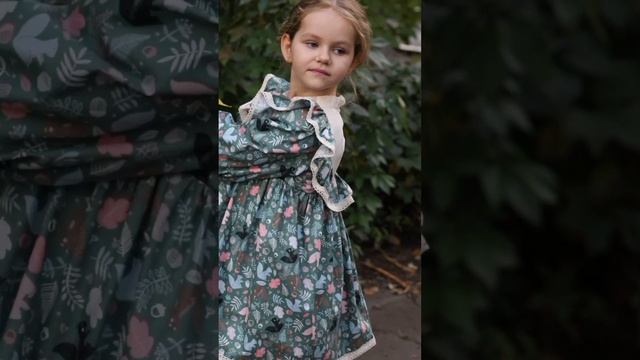 Child psychologists unanimously say that if a child does not want to dress, a crisis may be the reason for this. Namely, the “crisis of independence”, which takes place in different ways, but affects absolutely all children. Here we are talking about preschool children who can dress themselves, who understand everything they are told and who are aware of what they are doing. Stubbornness, and sometimes aggression in such children can arise as a process of building relationships with the outside world and other people. The child wants to feel independent and have the right to choose. And this is completely natural and normal. Parents, in this case, play the role of a kind of irritant, which not only does not give such an opportunity, but also forces, imposes something to do against their will. There is a so-called struggle for power. Disobedience and unwillingness to dress in this case expresses an attempt to defend their own positions. If this does not work out, if screams and running away do not help, and the adult defends his innocence with irritation and force, the child begins to cry.
Child psychologists unanimously say that if a child does not want to dress, a crisis may be the reason for this. Namely, the “crisis of independence”, which takes place in different ways, but affects absolutely all children. Here we are talking about preschool children who can dress themselves, who understand everything they are told and who are aware of what they are doing. Stubbornness, and sometimes aggression in such children can arise as a process of building relationships with the outside world and other people. The child wants to feel independent and have the right to choose. And this is completely natural and normal. Parents, in this case, play the role of a kind of irritant, which not only does not give such an opportunity, but also forces, imposes something to do against their will. There is a so-called struggle for power. Disobedience and unwillingness to dress in this case expresses an attempt to defend their own positions. If this does not work out, if screams and running away do not help, and the adult defends his innocence with irritation and force, the child begins to cry.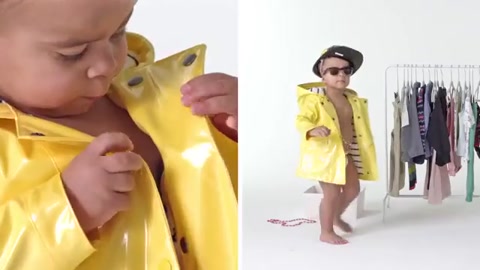 The repetition of such confrontations between a child and adults does not lead to anything good. Such behavior provokes a violation of the mental state of a small person. Gradually, he develops fears, aggression and even depression.
The repetition of such confrontations between a child and adults does not lead to anything good. Such behavior provokes a violation of the mental state of a small person. Gradually, he develops fears, aggression and even depression.
What to do?
In a situation where a child does not dress consciously, an adult needs to stop, distance himself from what is happening and, as if from the outside, look, assess the situation and calmly begin to act, not succumbing to either children's provocations or his own panic.
Children are the same people as adults, they also have their own hobbies, desires and preferences that need to be considered, and, if necessary, unobtrusively and imperceptibly correct them. Therefore, it is necessary to give them the right to choose and the right to act. For example, you can offer pre-selected clothes for dressing, let the baby decide what he will wear. You can ask to bring a jacket or allow you to put on a hat yourself, ask which foot to put on shoes first, or give the right to choose between gloves and mittens.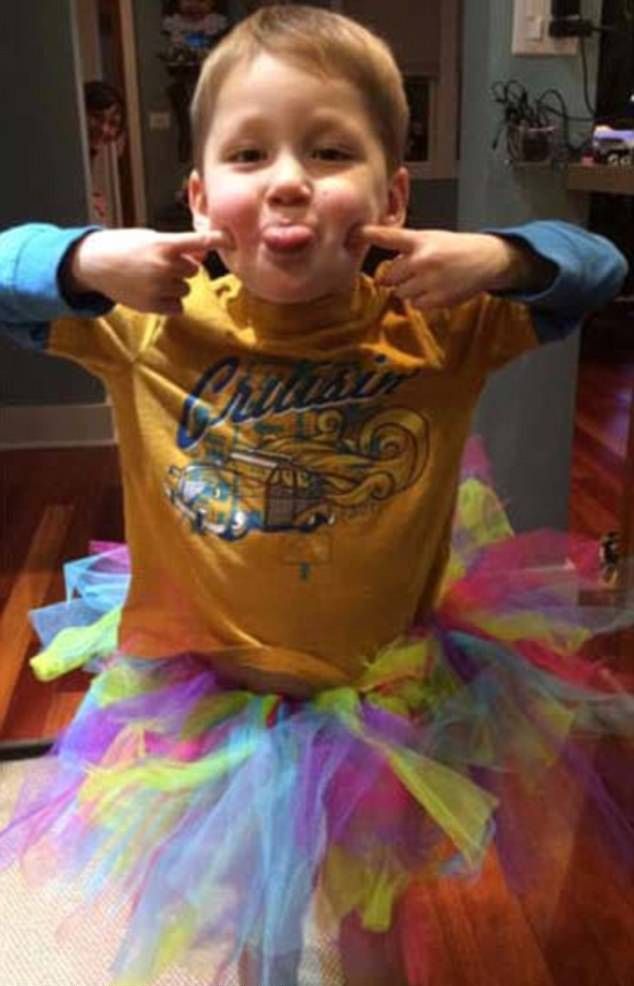 Little things like that will make your child feel important.
Little things like that will make your child feel important.
It is difficult for a child to switch from one thing to another. Therefore, before you start dressing, warn him in advance. Say that in 10 minutes you need to go outside. At the same time, it is necessary to show the child to the clock and explain how it works, because children do not have the concept of time. You can defiantly start collecting things so that the child sees this and is mentally ready to dress. It is even better to prepare his things in advance. Moreover, he must participate in the choice of things himself.
Any child does not want to dress up because it is not interesting and rather boring. Make this unpleasant activity fun and exciting for him. Games, counting rhymes, nursery rhymes, fairy tales, stories - these things always help out great in any situation.
All children want to be like someone: whether it's a cartoon character or a neighbor fireman - it doesn't matter, the main thing is that the child understands that he quickly dressed up as his hero.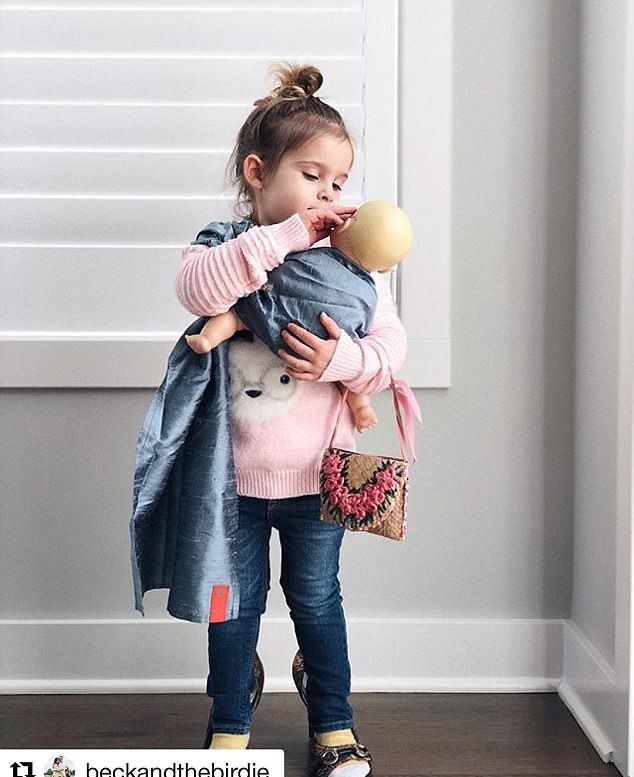 However, in no case in this situation can it be compared with someone from a negative point of view. He should be no worse than someone else, but better or almost the same. Always keep positive feedback in mind. A positive emotional component is the main thing that should be in relationships with children, not only at the time of dressing, but always. He should do any business not under pressure, but with pleasure, with desire and with joy.
However, in no case in this situation can it be compared with someone from a negative point of view. He should be no worse than someone else, but better or almost the same. Always keep positive feedback in mind. A positive emotional component is the main thing that should be in relationships with children, not only at the time of dressing, but always. He should do any business not under pressure, but with pleasure, with desire and with joy.
If a child does not want to dress, always remember that the process of dressing itself is only a special case in the life of a little man. If for you these 5-minute screams while dressing are a trifle that you can endure by forcibly breaking the will of a child, then for him this is a whole life. Your and his behavior at this time, the child, without hesitation, projects on his whole life and on relationships with others. These 5 minutes can become his norm of behavior in all life situations. Therefore, in no case should you use force, shout, give ultimatums or threaten the child. It is necessary to act patiently and with love. And you must always remember that before you is not some strange and terrible monster, but your own and long-awaited child, the best and the best!
It is necessary to act patiently and with love. And you must always remember that before you is not some strange and terrible monster, but your own and long-awaited child, the best and the best!
The kid takes a long time to get dressed: how to speed up the mess - Parents.ru
Education
- Photo
- @CarloA/Getty Images
teacher
In general, the kid would go to kindergarten even in pajamas. But if you show signs of impatience, he is immediately ready to "take the fight": whining begins or a scandal flares up. You feel that he is dissatisfied with neither your proposal nor his behavior. In addition, it greatly hinders you yourself: the simple phrase “go get dressed” said twice is nothing. But if you repeated it ten times and started to get annoyed, it's easier to take matters into your own hands again - in the truest sense of the word - and help the child get dressed. And then ask yourself again: how to teach a child to dress himself? And what if the child gets dressed for a long time?
And then ask yourself again: how to teach a child to dress himself? And what if the child gets dressed for a long time?
Too difficult a task
You can easily handle shoelaces, know how to tie a bow, fasten a tight button and turn a twisted skirt. But once upon a time you were perplexed by the offer to tie your hat and straighten your scarf yourself. So your child still lacks skills and experience, and you need to help him learn to cope with difficulties.
What to do?
First of all, make your baby's life as easy as possible: between beauty and convenience, choose convenience, even if at the expense of fashion. Buy shoes with Velcro or replace the laces with special elastic bands, clothes with snaps instead of buttons, trousers and skirts with elastic rather than complicated fasteners. Make sure that the zippers are with large teeth. T-shirts and sweatshirts should have an elastic collar: a head stuck in a T-shirt twice a day is a serious cause for irritation.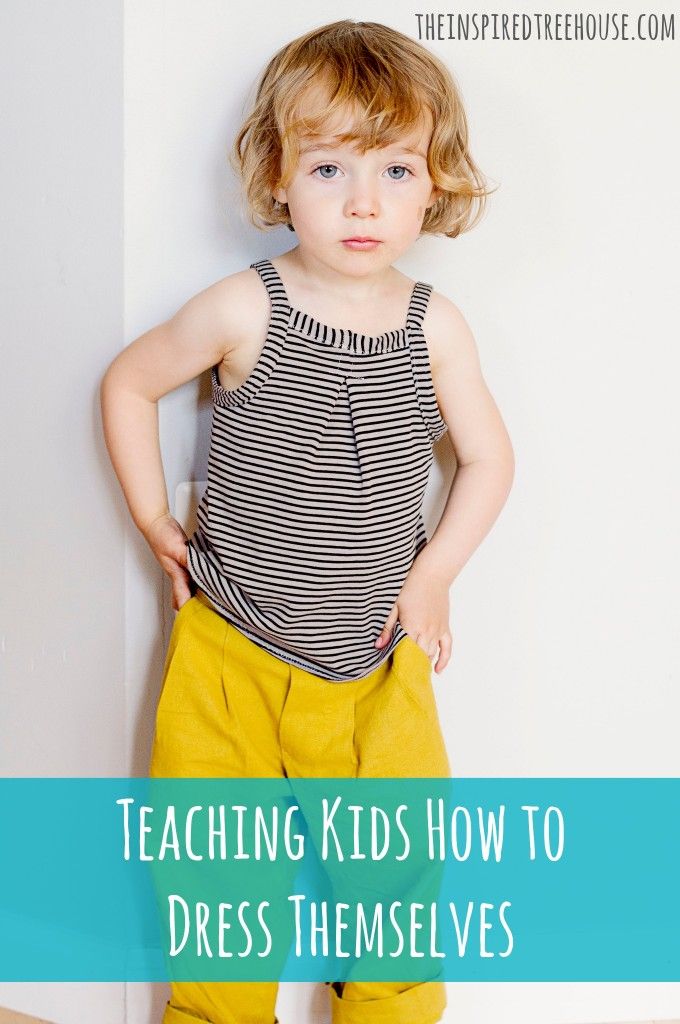 A jumper with a bright pattern on the chest will help the child to put it on correctly, and not "back to front". Use little tricks, such as attaching a ring or a small key chain to the zipper, so that the baby can find it faster.
A jumper with a bright pattern on the chest will help the child to put it on correctly, and not "back to front". Use little tricks, such as attaching a ring or a small key chain to the zipper, so that the baby can find it faster.
Tell your child: “I can see that you are still struggling with all these clothes. I'll zip up your jeans, and you'll put on your own T-shirt and socks."
So sensitive!
You can't understand why a child refuses to wear one sweater, and wears the second, exactly the same, to holes. It’s strange to you that a rather loosely tightened scarf causes him violent protest and tears, and pant legs must certainly be tucked into socks, because they “scrape the skin on the legs.”
Increased tactile sensitivity is common in both children and adults, but the latter already know how to cope with unpleasant sensations, often very subjective, and not ruin their day. And the baby feels discomfort, but not always its reason sounds convincing to you.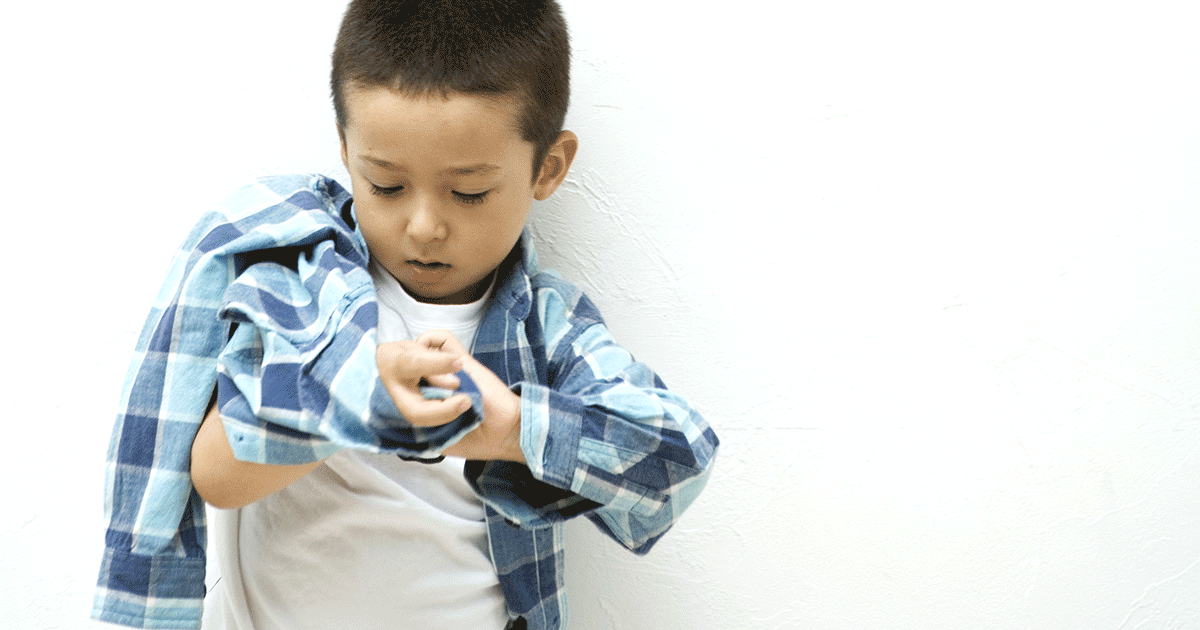
What to do?
Carefully choose comfortable clothes, you can go with your child. When buying new things, especially those that are close to the body, evaluate its softness - for example, pressing it against your cheek: a rough or “glassy” fabric to the touch will irritate the skin and make the baby act up again.
- Photo
- Susan Barr/Getty Images
Extra Measures
Many kids don't like high-necked turtlenecks, so a soft scarf will help in cold weather. Warm items made of wool and acrylic are often too scratchy for baby's delicate skin, so choose fleece or polartec clothing: it is softer and not inferior to wool in quality. Get rid of socks with a tight elastic band and stretched pantyhose. Immediately cut off the inner labels from new clothes, remove protruding threads. When washing, be sure to use the extra rinse cycle of the laundry so that the powder particles do not remain on the clothes, and add fabric conditioner to soften the fabric.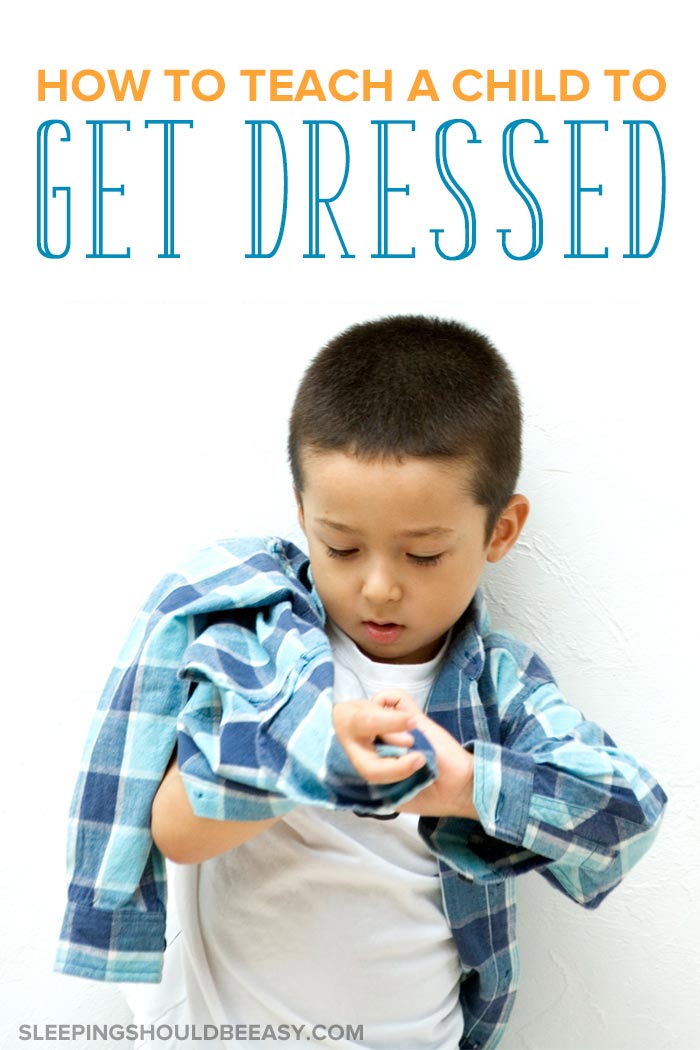
Tell your child: “I understand that you are uncomfortable, but we can handle it. Let me explain in detail what is stopping you and where you need to fix it, and I will try to make it convenient for you.
Be patient
Morning is scheduled by the minute. When you notice that the child has put on his underpants inside out and wanders thoughtfully towards the kitchen, you prefer to dress him yourself than to be late everywhere. But in this way do not accustom him to independence.
What to do?
Accept the fact that the child does everything slower than you. The more he feels your impatience, the more tempting it is for him to do the opposite and show off, sitting under the door. The kid himself chose a T-shirt and put it on? Praise him even if things don't fit. On a day off when there is nowhere to rush, give your child the opportunity to dress at their own pace. To gain time, arrange the clothes in the closet in advance in full sets or hang them on convenient hangers - this will eliminate the morning messages on the topic “I did not find the red shirt”.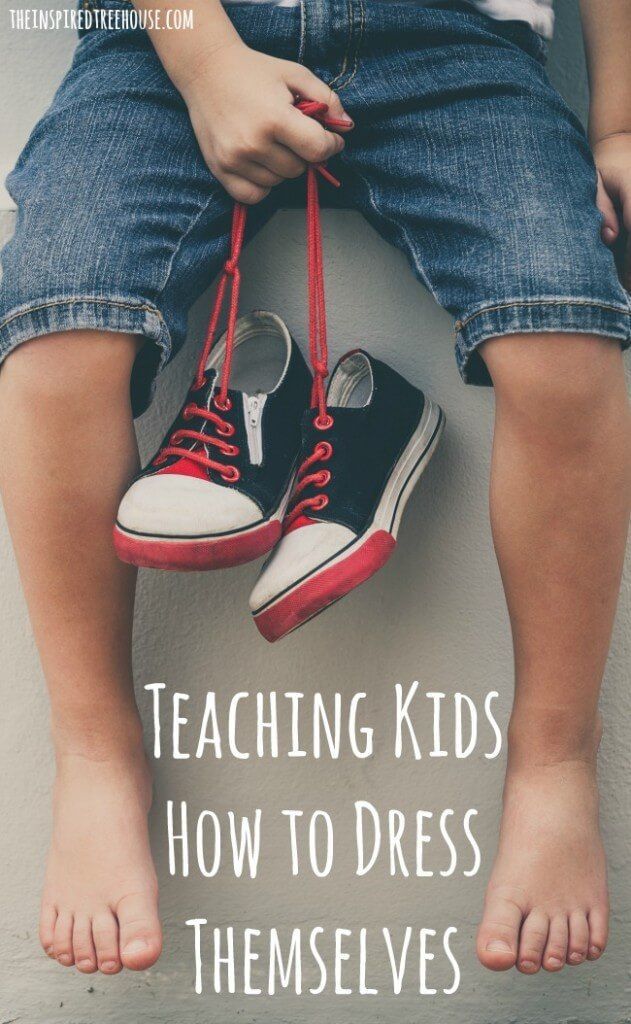 The set itself can be taken out of the closet the night before and folded in the order of putting on: shorts first, jeans and socks last. For small items of clothing that can get lost, get a shallow transparent container - you can also put unpaired socks there after washing. Immediately agree that clothes that require washing are sent to the laundry basket.
The set itself can be taken out of the closet the night before and folded in the order of putting on: shorts first, jeans and socks last. For small items of clothing that can get lost, get a shallow transparent container - you can also put unpaired socks there after washing. Immediately agree that clothes that require washing are sent to the laundry basket.
Tell the child: “I am very pleased that you are trying”; "This jersey is worn backwards, but we'll change it now."
A child who is just learning to dress does it very slowly. Have patience and don't rush it. The best solution is to start getting dressed 15-20 minutes earlier.
- Photo
- Getty Images/Hero Images
Dressing up while playing
Maybe yesterday the child was scolded in kindergarten, just had a bad day, or the baby woke up in a gloomy mood and needs extra attention? And what could be better than a mother dressing him herself like a little one? The only problem is that the child signals “I urgently need care and affection!” just when you're most in a hurry.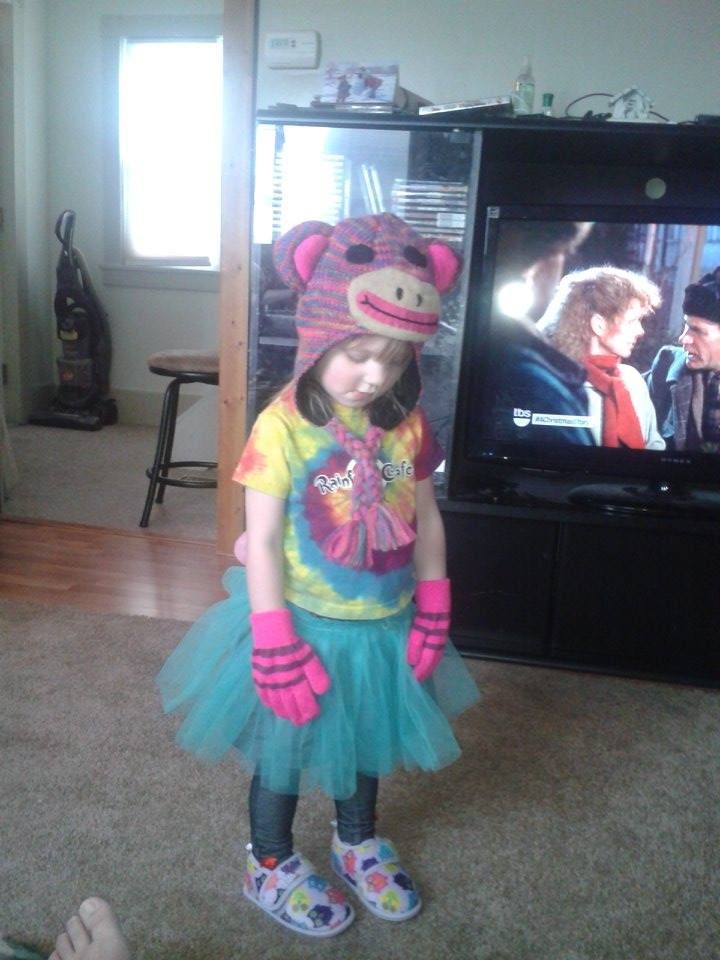
What to do?
Let your child understand that the speed of his fees does not affect your attitude towards him. Always set an alarm clock with a small margin: it is better to hug and mess around for five minutes in the morning than to get involved in a half-hour scandal just before leaving the house. Start a cheerful and cheerful ritual of getting up in the morning: sing songs or recite poems, carry it to the bathroom on your back or give a massage - then the child will be convinced that even in a hurry you remember him and are ready for communication. During quieter times of the day, try to give your child at least an hour in full, without being distracted by household chores. If the morning is clearly planned, and you introduce an element of the game into the training camp - for example, you will be the captain of the ship, giving the commands “It's time for breakfast!”, “Sailor, take the sock in your right hand!” - then the dressing process will pass quickly and unnoticed.